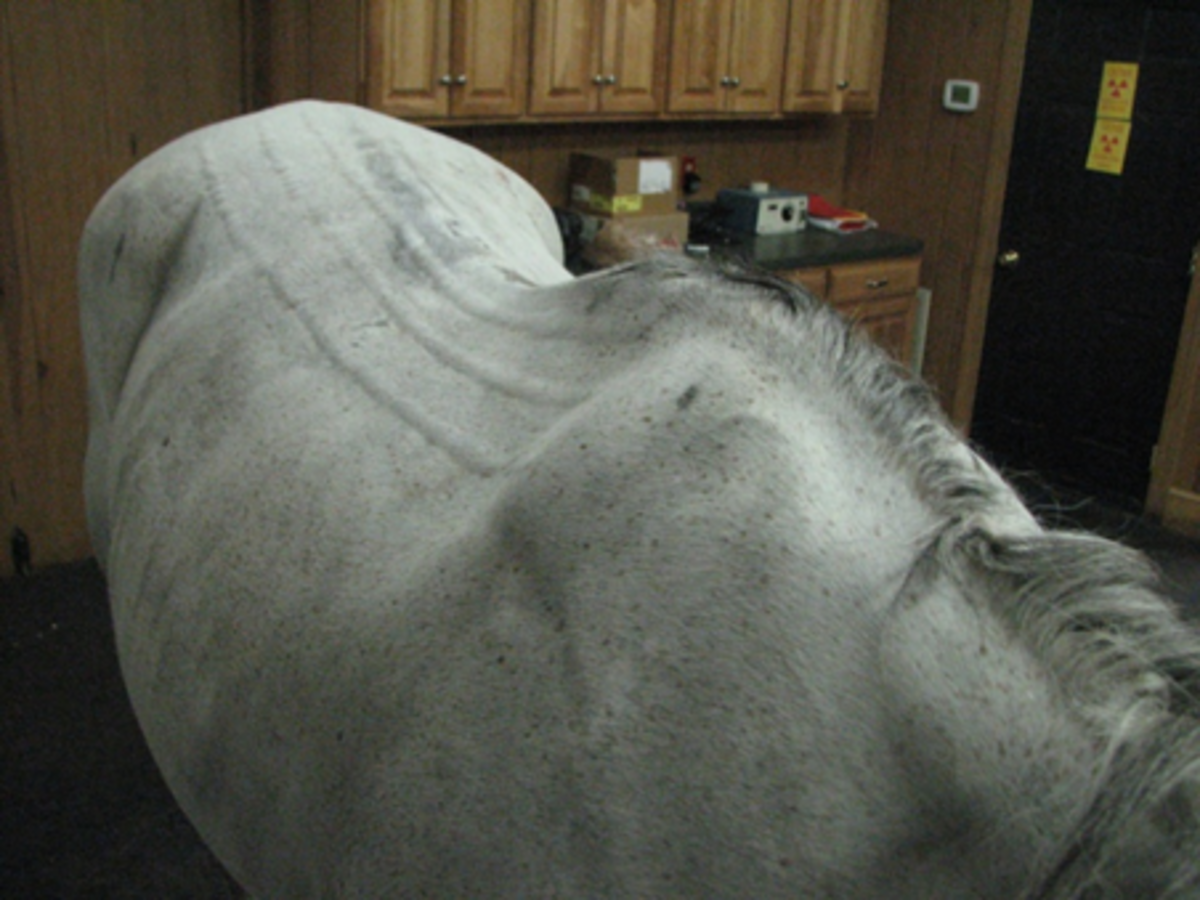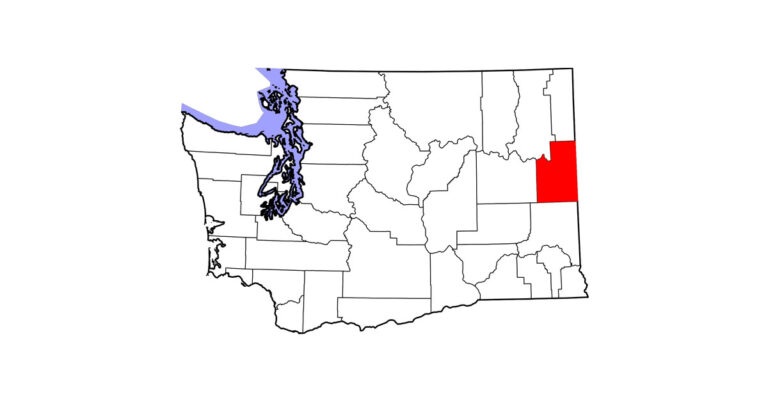Q: “Recently I’ve noticed that my gelding will hollow his back when I put on my saddle, and he seems like he is in pain when I groom his topline. Are these signs that my horse has back pain? If so, what can I do to address this?”
A: Indeed, back pain is a common finding among athletic horses.The most easily recognized sign of back pain in a horse is a negative reaction in response to pressure over his back. In some cases, simple daily activities like being curry combed cause pain, and the horse will flinch or lower his back away from the pressure, or his muscles will become more tense. Some horses only show pain in response to a larger stimulus, such as during saddling and mounting. Horses with back pain may lower their back to avoid contact when the saddle is placed overtop, or turn to bite as the girth is tightened. Negative behaviors at the mounting block may be a sign of back pain. The degree of the response can vary widely, and in severe cases can include dramatic avoidance behaviors such as rearing or bucking. The most common complaint from an owner when a horse has a back problem is poor performance. Often a horse with a back problem is sound but just not performing as expected. He may be knocking down more rails than usual or missing his lead changes, or not be able to maintain a steady connection in a frame. Back pain is not exclusive to any one discipline and is seen in all types of performance horses.
Diagnosis
Pain and injury can occur at any one of the structures within the back. Conditions of the back that can affect performance of a horse include narrowing of the space between the bony projections of successive vertebra in the region under the saddle (“kissing spine”), degenerative arthritis, inflammation of the muscles or ligaments, or fractures of the bones in the spine. In many cases, complete diagnosis is not just limited to one aspect of the back, as these areas are interrelated.
Even though most horses with back problems are sound, evaluation still begins with a classic lameness examination, including evaluation of the horse moving at various gaits, possibly with and without the weight of a rider. One of the tools we commonly use in our practice is a weighted surcingle. Even though the weight applied is relatively small compared to the collective weight of tack and rider, it can elicit a significant avoidance response by the horse (bucking, for example) to indicate that there is back pain.
Another important step in evaluation is careful palpation of the bony and soft tissues of the back, whereby the veterinarian slowly and methodically touches the horse’s back and evaluates the response to pressure over a specific area. Contraction and tension of the musculature (spasm) in response to palpation of the longissimus musculature is a hallmark sign of back pain. Some veterinarians employ the technique of motion palpation, which is an adaptation of a human chiropractic evaluation tool that assesses how well the individual segments of the back move in response to subtle motion created by the veterinarian. This helps the veterinarian assess flexibility, and to know if a horse is limiting extension or rotation to avoid pain in its spine. Imaging of the back through radiographs, ultrasound and in some cases a bone scan, is essential to develop a complete diagnosis of the underlying condition.
Treatment and Management
Treatment and management protocols are developed specific to the diagnosis and can include a combination of therapies. A commonly used modality is shockwave therapy, in which a high energy sound wave is generated outside the body and pulsed into the tissues of the back to reduce pain.
Targeted injections into the joints and soft tissues of the back are done routinely to manage back pain. A veterinarian may choose to inject with corticosteroids or regenerative products like platelet-rich plasma.
The technique of mesotherapy is very effective at reducing muscle spasm. In this procedure, the veterinarian injects a small amount of medication into the skin to achieve muscle relaxation. While the disruption only lasts hours, the resulting relief can last months. This is also a less invasive approach compared to more traditional injection therapy.

Courtesy, Virginia Equine Imaging
Medical management can also include systemic administration of medications such as the muscle relaxer methocarbamol, non-steroidal anti-inflammatories and bisphosphonates, which reduce the activity of the cells which break down bone in response to inflammation. Even surgery can be considered for certain conditions. If there is an underlying primary lameness that is contributing to the back pain, then this must be addressed as well.
Rehabilitation is also very important for successful management and return to training. Alleviating the pain is the first step to restoring normal movement of the back, but helping the horse redevelop his muscles to avoid ongoing stress on the ligaments and joints is essential to reduce the recurrence of pain. This can be achieved by adjustments in the exercise program, for example how a horse is warmed up, or through a short break in training under saddle to avoid direct pressure on the back while the inflammation subsides.
Physiotherapy with a functional electric stimulation device which externally stimulates muscle movement is useful to reduce spasm and retrain the muscle’s normal biomechanical action. Application of this therapy should only be performed by a trained veterinary professional or physiotherapist.
Practical considerations such as changes in saddle or adjustment of saddle fit can also be very important. Once the underlying condition has been addressed, adjunct therapies can facilitate continued comfort. These can include acupuncture, chiropractic treatments, massage therapy and regular use of supportive devices like cold laser and magnetic blankets.
The good news is that following diagnosis and treatment, the large majority of horses are able to happily return to work. Ongoing attention and periodic management over a horse’s career may be necessary, but properly supported, most horses are able to continue long performance careers.
This column has not been approved or endorsed by U.S. Equestrian.










